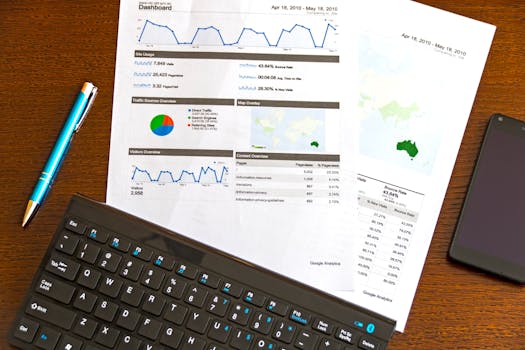Apps
How to Extend Your Cell Phone Battery Life: Essential Tips
Find out why your phone's battery might be draining quickly. Learn how apps and notifications affect power consumption.
Advertisement
These days, cell phone battery life has become a central concern for users. This concern intensifies, especially when some apps consume power at an alarming rate. Every time we check our phone, the battery level seems to have dropped dramatically, and the question that arises is: why?
Apps are often responsible for a large portion of a phone's power consumption. However, the reason may not be as simple as it seems. Constant resource usage, incessant notifications, and background activity significantly impact battery performance.
Understanding why some apps consume so much battery is essential to improving the user experience and extending the lifespan of your device. In this article, we'll discuss the main factors that impact power consumption, helping you make more informed and efficient choices about the apps you use.
Background Consumption
Background consumption occurs when an app continues to run even when it's not actively being used. This feature allows apps like social media or messaging services to receive real-time updates and notifications.
While convenient, keeping apps updating in the background consumes a significant amount of battery. For example, a social media app that continually downloads new content. This creates constant battery drain.
Some operating systems offer the option to limit or disable background usage. This can help ease battery strain, resulting in a longer-lasting user experience.
In practice, proper application management can vary. While some are essential for receiving updates, others can be frozen without any harm. It's always necessary to find a balance.
Therefore, consciously using background resources can be an effective strategy for saving energy and extending the battery life of your mobile device.
Constant Notifications and Alerts
Notifications are one of the biggest battery drainers. When a device receives incessant alerts, it adjusts its brightness and activates audio features, which consequently requires more power.
A study showed that apps that send a lot of notifications daily can reduce battery life by up to 30%. These services frequently "wake up" the device, consuming valuable power.
Additionally, vibration and notification sounds require even more power. Each time your phone signals an alert, the battery is affected, especially if there are an excessive number of alerts.
One way to mitigate this impact is to adjust your notification settings. Muting or disabling notifications from non-essential apps can result in significant battery savings.
Therefore, it's recommended to review which apps truly deserve your attention. Focusing on the most relevant ones can help you optimize battery usage efficiently.
Poorly Optimized Resources
Apps that aren't optimized for the operating system can have uncontrolled battery consumption. Code efficiency and proper resource management are crucial in this regard.
Developers who prioritize quality and efficiency typically create apps that consume less power. Conversely, poorly designed apps can require excessive CPU processing and thus drain the battery.
Additionally, the use of heavy graphics and constant animations can have a direct impact on battery efficiency. Less complexity generally results in greater efficiency.
Therefore, choosing apps from trusted developers can be crucial. Checking user reviews and feedback can help you identify which apps are most battery-efficient.
Choosing high-quality, optimized apps can significantly improve your overall battery performance, resulting in a more satisfying and long-lasting experience.
Battery Consumption Table by Application Type
| Application Type | Average Battery Consumption |
|---|---|
| Social media | 30%-40% |
| Games | 50%-70% |
| Instant Messaging | 20%-30% |
| Browsers | 15%-25% |
| Streaming Applications | 40%-60% |
Impact of Background Activities
Background activities, such as location tracking, are particularly deceptive when it comes to power consumption. Many apps constantly request location access, even when not in use.
This constant activity requires the GPS to remain on, which consumes a considerable amount of power. In many cases, this functionality may be unnecessary, depending on the situation.
Disabling location tracking for apps that don't need it while they're not active can result in significant power savings. It's a simple change that can have a big impact.
Additionally, the option to limit access to this data to only "when in use" is an effective strategy. This helps not only save battery life but also protects user privacy.
Therefore, carefully managing location permissions can not only save battery life, but also provide a more focused and secure user experience.
Third-Party Applications and Their Implications
Third-party apps often have access to varying levels of device resources, and some may not be well-optimized. These apps can drain the battery unexpectedly, becoming a critical factor.
Additionally, installing multiple apps from different sources can increase the likelihood of unnecessary power consumption. It's always advisable to use only those you know and trust.
It's worth noting that many free apps can be loaded with ads and unnecessary features. These features can increase resource consumption and, consequently, battery drain.
Therefore, a good criterion when choosing applications is to always consider the developer's reputation, in addition to avoiding excessively heavy tools that do not have clear functionality.
By choosing optimized apps from trusted sources, you're not only helping to preserve your battery, but also improving the overall security of your device.
Final Considerations on Battery Consumption
In short, understanding the nuances of battery consumption has a real impact on your phone's lifespan. By opting for conscious use, you can significantly increase your battery life.
Analyzing background power consumption, carefully managing notifications, and choosing well-designed apps are essential steps along this path. Efficiency in each of these aspects helps keep your device functional and your battery healthy.
Additionally, it's essential to keep your device updated. Updates often include significant improvements in power optimization, which can help extend battery life.
Ultimately, a combination of wise choices and careful management can lead to a much more satisfying and long-lasting user experience. Knowledge is a powerful tool for maximizing battery efficiency.
So, try to adopt these practices and make informed choices when using your smartphone. With small changes, you can transform your daily experience and ensure a longer-lasting device.
Trending Topics

Mastering Events and Booyah! to Obtain Free Diamonds
This guide delves into the official and safe methods for accumulating Diamonds. Click to learn more about the methods.
Keep ReadingYou may also like

How to Get Robux Legitimately
Providing services for other creators is one of the most effective and safe ways to earn free Robux on Roblox.
Keep Reading


